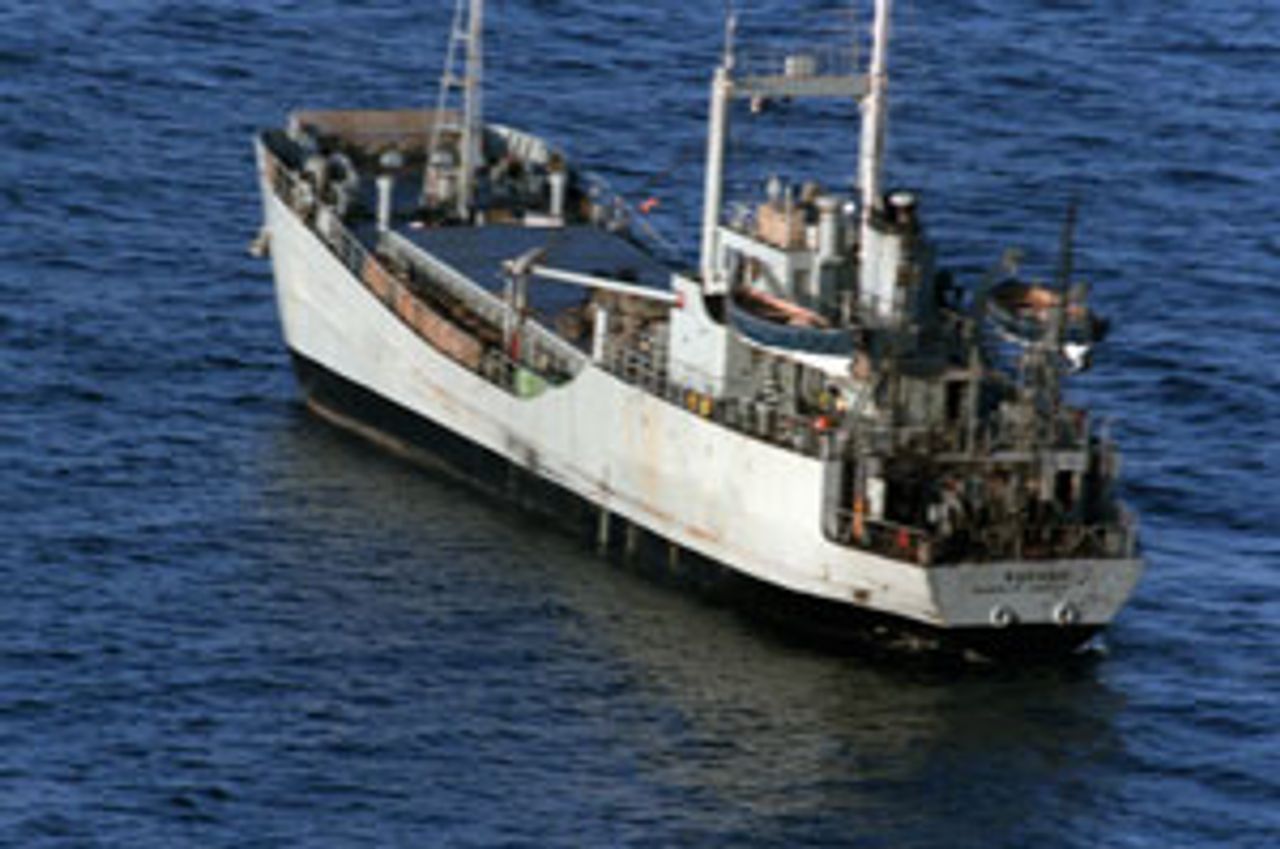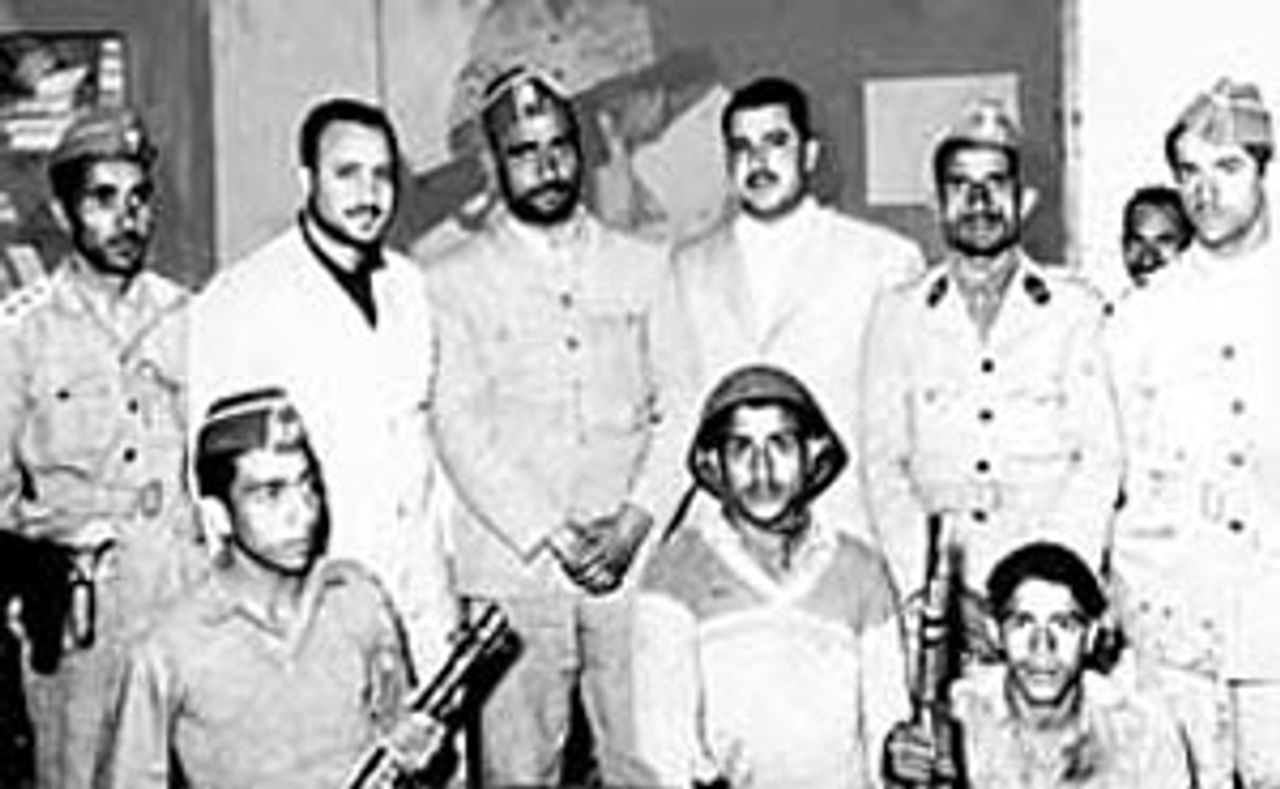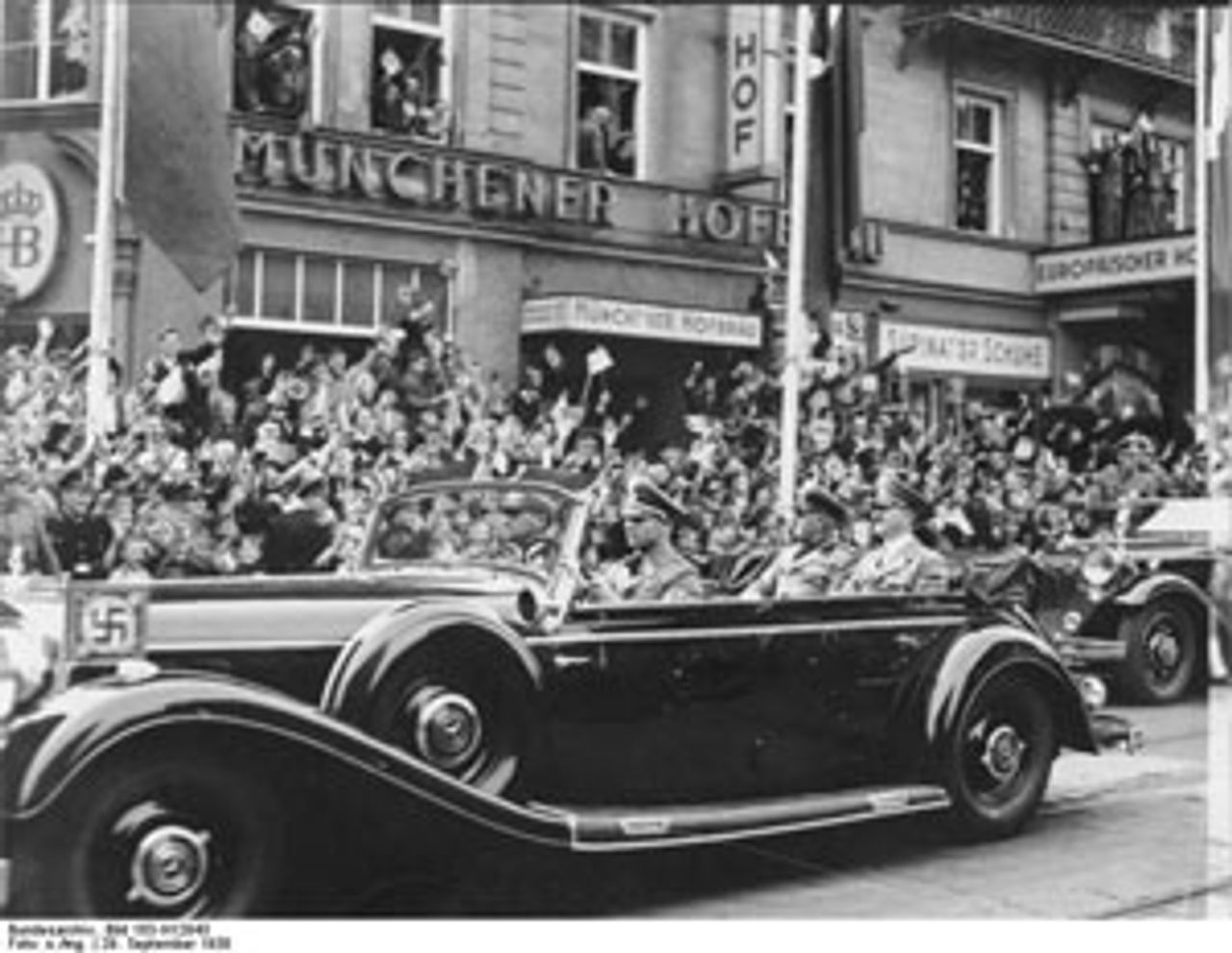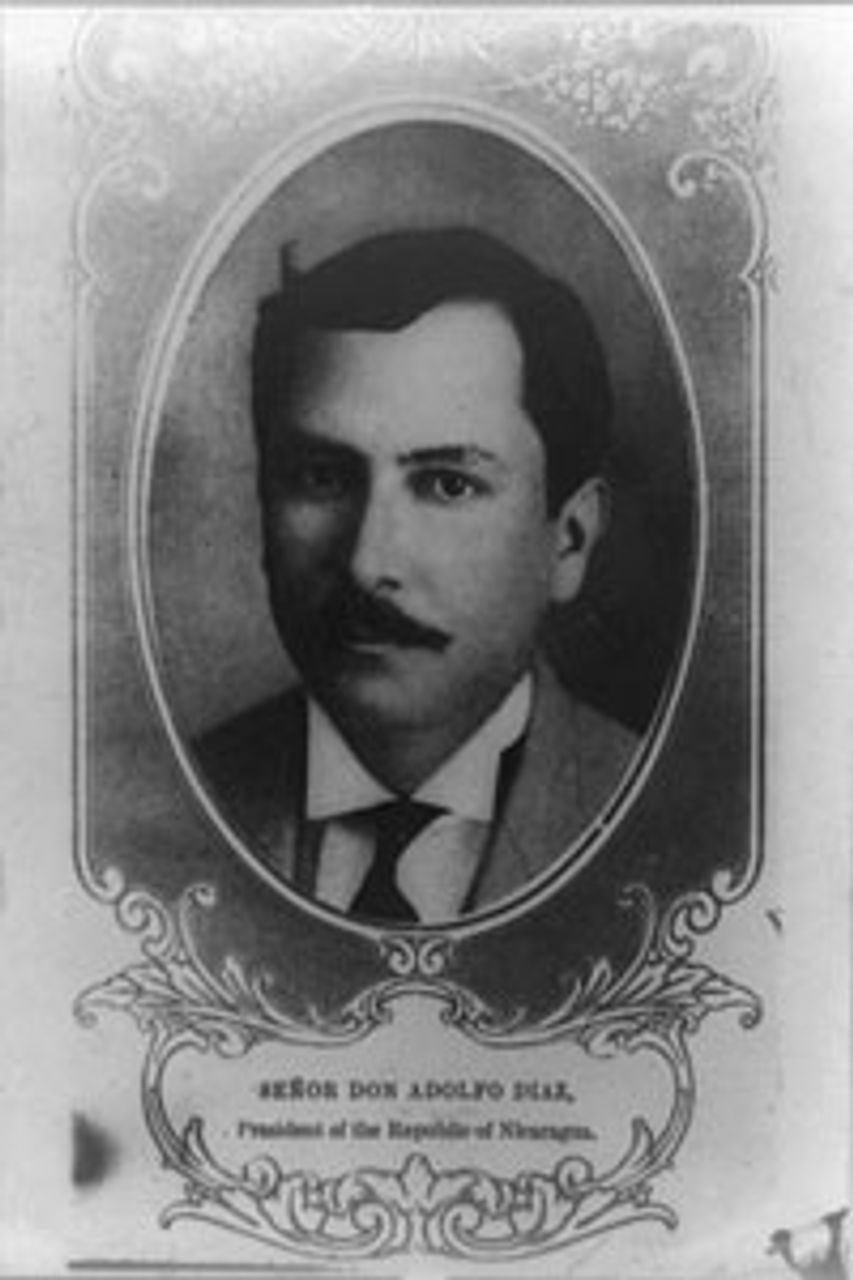This Week in History provides brief synopses of important historical events whose anniversaries fall this week.
25 Years Ago | 50 Years Ago | 75 Years Ago | 100 Years Ago
25 years ago: Iranian ship scuttled after attack by US forces
 The Iranian ship Iran Ajr
The Iranian ship Iran AjrOn September 27, 1987 the US Navy scuttled the Iranian ship Iran Ajr in 240 feet of water 40 miles off the coast of Qatar, less than six days after a murderous attack on the vessel by American forces. The 54-meter landing craft was tailed by US helicopter gunships, then subjected to heavy machine-gun and rocket fire, which set the ship ablaze, killed at least three Iranian seamen outright and caused two more to be lost at sea.
The surviving 26 crew members were taken captive and interrogated, only being allowed to return to Iran six days later, the same day their ship was scuttled.
The attack was a direct provocation against Iran conducted by the largest US war fleet assembled since the Vietnam war. It was timed to coincide with the address before the United Nations by Iranian president Ali Khamenei. Ostensibly, the American presence in the Persian Gulf was to protect US-flagged Kuwaiti oil tankers and promote “peace” in the Gulf, but Washington’s policy consistently fueled the bloody Iran-Iraq war that had been raging for seven years.
The excuse that Washington gave for the attack was that the Iran Ajr was laying mines in the Gulf. US forces had turned a blind eye, however, to Iraqi attacks on Iran and Kuwait’s role in supporting Iraq by providing ports for weapons to be used against Iran. Behind US aggression toward Iran was American imperialist determination to use its military superiority to control the geostrategically critical oil-producing region.
The attack on the USS Stark the previous May, during which 37 American seamen were killed, was also used as a pretext for the assault, despite the fact that Iraq, not Iran, was responsible for the earlier episode--ostensibly an accident.
Since the overthrow of the US-installed torture regime of the Shah by the Islamic revolution in 1979, American policy had been guided by the desire to re-establish a regime in Iran answerable to Washington.
50 years ago: Coup sets off civil war in Yemen
 Abdullah Sallal
Abdullah SallalOn September 25, 1962, a group of officers led by Abdullah as-Sallal toppled the government of Yemen’s newly installed absolutist ruler, Imam Muhammad al-Badr, and the next day proclaimed the Yemen Arab Republic (YAR). Al-Badr escaped the shelling of the royal palace in Sanaa and regrouped with pro-monarchist elements. The civil war that ensued lasted until 1970 and claimed the lives of as many as 200,000.
Al Badr and the royalists were backed by neighboring Saudi Arabia, along with Jordan, Pakistan, the United Kingdom and, clandestinely, Israel. The UK continued to dominate the strategically situated South Yemen and its port of Aden, situated near the Bab-el-Mandeb strait in the Red Sea, separating Africa and Asia. Sallal turned for help to Egypt and Gamal Abdel Nasser, who would send hundreds of thousands of Egyptian soldiers over the next few years in a war sometimes referred to as “Egypt’s Vietnam.”
The Soviet Union and the Eastern European Stalinist regimes quickly moved to recognize the YAR. The Kennedy administration, still seeking to cultivate a “Third Force” in the Arab world, did not wish to be too closely associated with its reactionary Saudi allies. Washington sought, and failed, to mediate between Egypt and Saudi Arabia, but ultimately followed West Germany, Italy and Canada in offering diplomatic recognition to the YAR by the end of 1961.
Yemen had joined Egypt and Syria in a very loose federation called the United Arab States (UAS) from 1958 until 1961--not to be confused with the United Arab Republic (UAR), which included only Egypt and Syria. Nasser dissolved the association with Yemen in late 1961 after Imam Ahmed, al-Badr’s father, who had served as co-president of the UAS, criticized Egypt’s nationalization program. Nasser then pivoted toward the Cairo-based Free Yemen group, which sought a secular government in Yemen and the expulsion of the UK from South Yemen, and supported the coup against Badr.
75 years ago: Mussolini and Hitler meet in Munich
 Hitler and Mussolini in Munich
Hitler and Mussolini in MunichItalian fascist leader Benito Mussolini arrived in Munich on September 25, 1937 for five days of talks with his German counterpart, Nazi leader Adolf Hitler. Behind closed doors, German and Italian diplomats had previously ironed out many differences, strengthening the Rome-Berlin axis.
With geopolitical issues involving Asia, the Balkans, the civil war in Spain and the Soviet Union already settled between the two fascist states prior to the visit, German attention could be turned towards feeding the ego of the Italian leader and repeating the message of German and Italian commonality of interest and purpose.
“Nothing was spared in the preparations for a huge extravaganza with all the conceivable pomp and circumstance to make the maximum impact on the Duce during his state visit to Germany,” writes Hitler biographer Ian Kershaw. Mussolini was treated to a series of banquets, drives, visits, inspections and conferences, as well as the largest display of German military maneuvers ever witnessed.
Hitler’s wooing of Mussolini aimed to forestall any possibility that Italy might be drawn into an alliance with the UK and France. Paris still hoped to neutralize Italy in the event of war with Germany. Under the Locarno pact of 1926, Italy was obligated to aid France if the latter were attacked by Germany.
100 years ago: US marines and navy confront Nicaraguan rebels
 Adolfo Diaz
Adolfo DiazOn 25 September, 1912, 700 Nicaraguan rebels under the leadership of General Luis Mena surrendered after being confronted by 2,700 US marines and navy personnel. The US intervention followed a period of protracted instability and infighting in the Nicaraguan political establishment.
In August 1910, Liberal president Jose Santos Zelaya had been forced into exile, after angering Washington and Nicaraguan conservatives by pursuing a relatively independent foreign policy. He was replaced by his vice president, Juan Jose Estrada, who led an unstable government that remained in power largely due to Washington’s support. Adolfo Diaz, Estrada’s vice president, was elevated to the presidency in 1911.
In June 1911, Diaz signed the Knox-Castrillo treaty with Washington, stipulating a $15 million loan from American bankers J. and W. Seligman and Brown Brothers, on the condition that the money would pay existing claims against the Nicaraguan government and finance a railway to the east coast. The treaty, which would have essentially placed the customs of Nicaragua under the control of Washington and American bankers, failed to pass the US senate, as a result of opposition from elements in the Democratic Party.
Diaz procured a loan directly from the American bankers, placing the Nicaraguan National Bank and the state-owned Pacific railway under majority American control. The loan met with opposition from broad sections of the Nicaraguan political establishment, including the Liberals, and Diaz’s minister of war, General Mena. When Mena was dismissed from Diaz’s government in July, he launched a rebellion which gained broad support, including from Liberals who had supported the Zelaya government. In response to requests for aid from Diaz, 100 American marines were sent to Nicaragua in August, followed by 2,700 in September.
According to historian Edward S. Kaplan, “There is little question that without the American marines the Diaz government would have been overthrown, and the [William Howard] Taft administration could not have allowed that to happen.”
The US intervention in Nicaragua was part of a broader aggressive policy being pursued by Washington in South and Central America. On September 24, 750 US marines were dispatched to the Dominican Republic, intervening in the ongoing civil war there to protect American interests.
